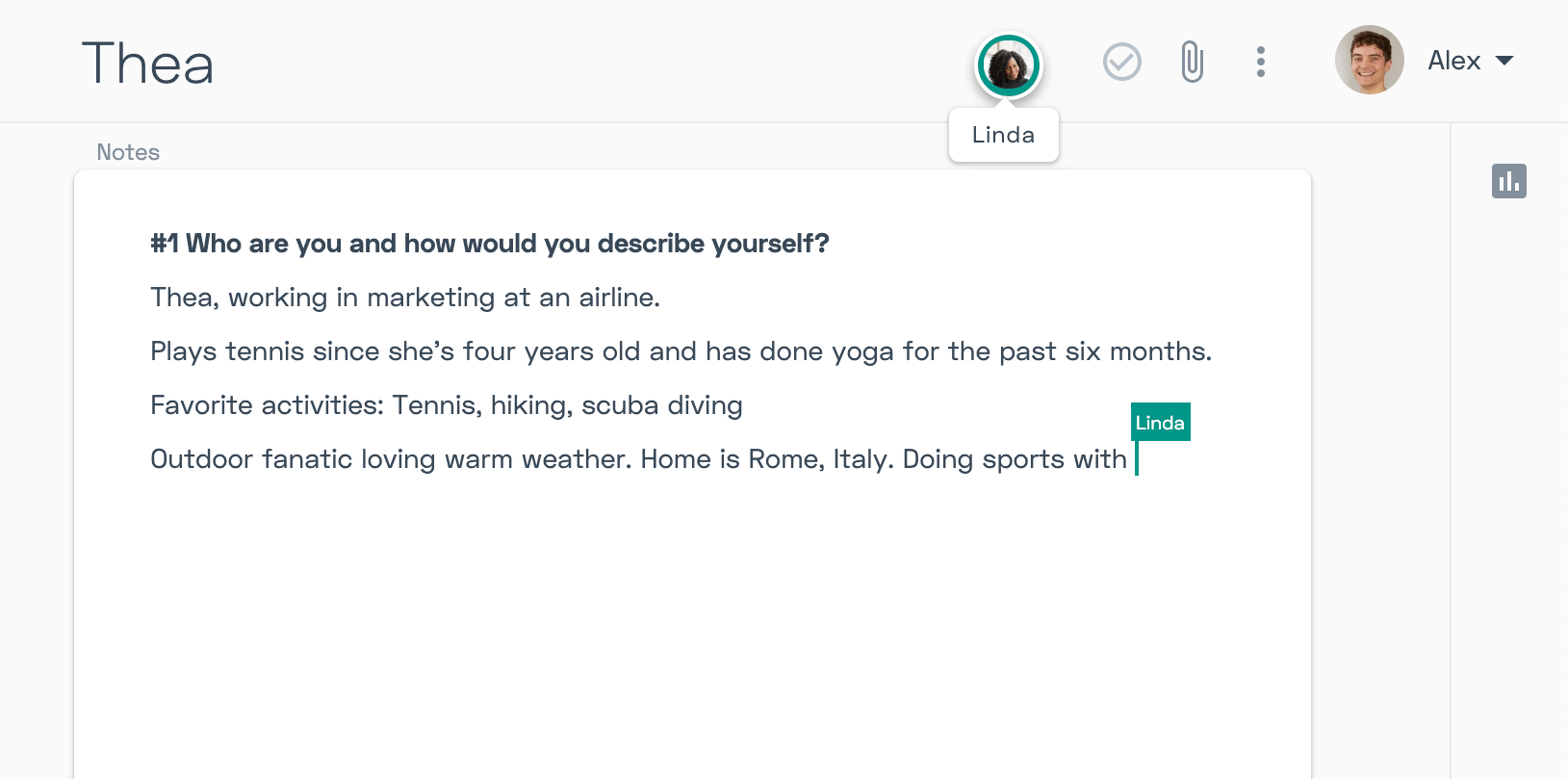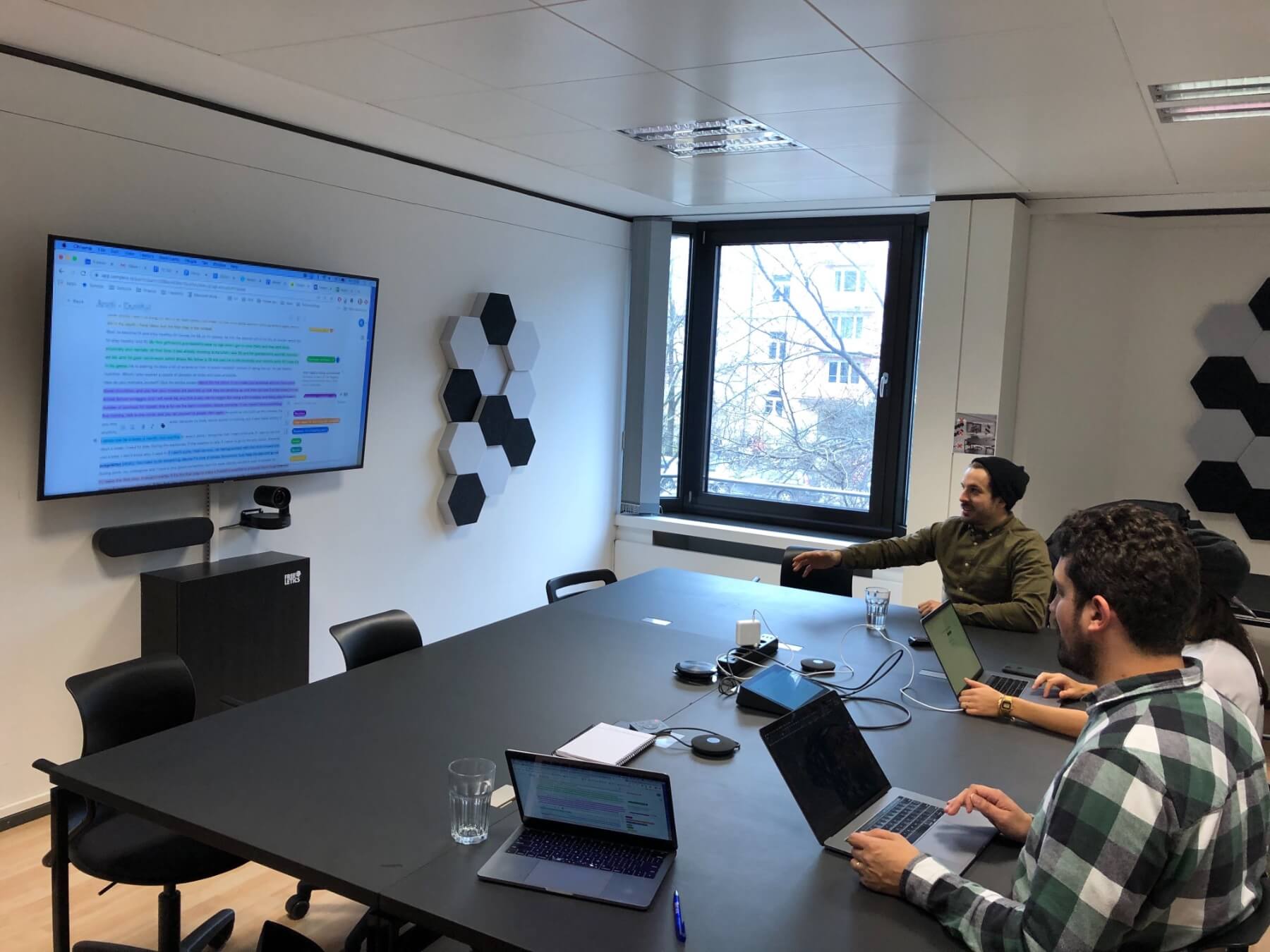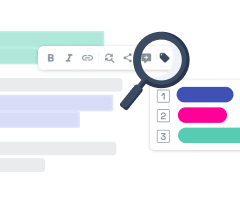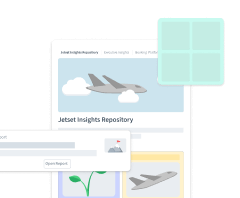Freeletics fosters collaboration and democratizes user research with Condens

About the company

The value of collaboration in UX research
One can really say the research team at Freeletics puts collaboration at the heart of their research activities. “The core research team only consists of one part-time research manager and one full-time researcher” Kayla explains, but in fact there are many more people in the company who do research. “We are working a lot with colleagues from design, product management, marketing and other teams” Kayla continues and the benefits are clear to her: “The collaborative approach creates consensus. We have more buy-in from colleagues when we work as a team.” The reason is that stakeholders develop deeper empathy with users and have higher trust in the findings, if they have been part of the process instead of being presented the results. It’s worth doing collaborative research, even though it’s actually slower in the short-term: “It definitely takes more time to jointly conduct a project, but the long-term benefits outweigh that by far” Kayla states.
Facilitating teamwork with Condens
Putting this collaborative work into practice is not easy, especially when working with stakeholders from different functions who may not be familiar with or trained in qualitative user research. “Condens helps us to work on research projects as a team” Kalya explains, referring to the real-time collaboration capability and the structure that guides stakeholders through a project. Let’s explore this in more detail.
Real time collaboration
When starting a new project, Kayla invites the respective colleagues to Condens and they jointly define the study’s objective and design. This is documented in form of a short project brief in the tool. This brief puts everyone on the same page and serves as a quick start guide for colleagues who join midway through the project.

When the sessions begin – for example user interviews – there is a clear setup: “There is a lead interviewer, 1-2 additional stakeholders as listeners and to ask follow-up questions, and 1-2 people taking notes directly in Condens.”
The team runs periodic debriefs after small batches of interviews, in which they start to tag the data and identify patterns. These sessions help to develop an initial understanding and align on the tag names. Once all interviews are completed, stakeholders look at the tags as a group and cluster the data. They do this while being in a meeting room together, pulling Condens up on a big screen. Every stakeholder is actively contributing by suggesting themes and discussing potential insights.

It’s these sessions that build consensus and buy-in. Condens makes this an efficient procedure as Kayla describes: “Using Condens cuts down on manual work as note taking, tagging and affinity diagramming are built into one tool.”
A structure that reduces project management overhead
What stands out for Kayla beyond the live collaboration is the simplicity and clarity how data is organized: "We could use other collaborative tools, but Condens provides this straightforward structure which exactly fits our needs". Data in Condens is organized by projects which each consist of three tiers.
It starts with "Sessions” to enter raw data like notes, images or recordings. In “Highlights”, data is analyzed across research sessions and affinity clusters are created. Lastly the “Artifacts” are a space to summarize findings and share them in the wider organization.

This structure intuitively provides orientation and indicates where to find what. Additionally, the three tiers build upon each other in terms of content, as the data from each stage is the basis for the next. This serves as a guidance for the team throughout the research project, because it makes clear what the current status is and what comes next.
For Kayla, a large part of stakeholder coordination and providing status updates to keep everyone in the loop happens implicitly by using Condens. In sum, that means less overhead for project management and more time for actual research.
Democratizing UX research
At Freeletics, there is much more demand for user research than two people can supply. It quickly became clear that they need to scale the research capabilities by empowering colleagues to do their own research. However, many stakeholders were only vaguely familiar with qualitative research. So how did Freeletics democratize research while keeping the quality of findings high?
For Kayla, again it is all about collaboration: “Conducting research as a team allows colleagues from other functions to learn research design and analysis themselves for future projects.” While jointly working on projects, stakeholders receive on-the-job training by a qualified researcher. So before non-research colleagues start doing their own projects, they have had multiple occasions to conduct sessions and analyze real data together with trained researchers.
- Ideal for collaboration
- Supports democratization of research
- Quick adoption even by non-researchers
Condens supports this spreading of research skills: the quick onboarding, ease of use and collaborative design “facilitate to share knowledge about the qualitative research approach” Kayla explains. People learn how to use Condens quickly and then show it to others, thus spreading the knowledge about qualitative data analysis in the company.




